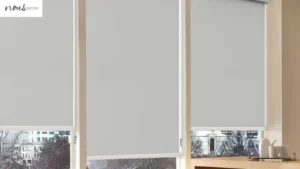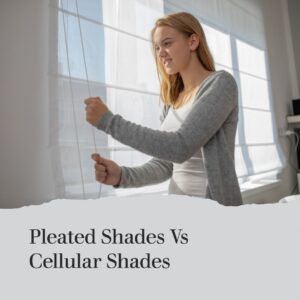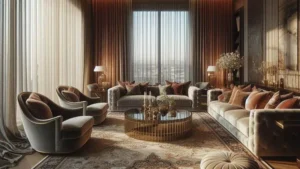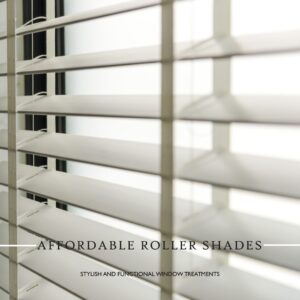Cellular shades are a type of window covering that can be used to regulate light and heat levels in the home. They are popular because of their versatility and ability to create a custom look that fits any space.
Cellular shades feature fabric-covered “cells” which form pockets of air, providing insulation and reducing energy bills. These unique window treatments come in different cell sizes, fabrics, colors, and textures so you can find a style that meets your needs.
Whether you’re looking for more privacy or insulation from the sun’s rays, cellular blinds offer an effective solution for any need.
Now, together with Nousdecor, let us explore the world of these wonderful shades!
Key Takeaways
- Cellular shades have fabric-covered ‘cells’ that provide insulation and reduce energy bills, making them an excellent energy-efficient option for homes.
- They come in different cell sizes, fabrics, colors, and textures, and offer soundproofing and insulation properties that reduce noise levels from outside sources.
- Cellular shades are easy to install, operate, and clean, and offer blackout materials that completely block out incoming sunlight or unwanted glare on TV or computer screens.
- They are a stylish and practical option for any home, and offer a great combination of benefits for added insulation, sound absorption, and improved lighting conditions.
What Are Cellular Shades?
You may have heard of cellular shades, but do you know what they are and why they’re so popular? Cellular blinds, also called honeycomb shades, are window treatments made from a variety of lightweight fabrics that form hexagon-shaped pockets.
These pockets trap air and create an insulating barrier between the room and the outside environment. As a result, honeycomb shades offer excellent energy efficiency by helping to keep heated or cooled air in your home while blocking out drafts. They also provide soundproofing and insulation properties that can help reduce noise levels from outside sources.
Cellular shades come in various colors, textures, fabrics, pleat sizes, and opacities (light filtering or blackout), as well as with cordless or motorized options for easy operation, making them fine versatile soft window solutions.
Most models are designed with “top-down/ bottom-up” capabilities which allow you to raise them from the top down or lower them from the bottom up for flexible light control as well as privacy when desired. They can even be easily adjusted with a remote control!
In addition to their practical benefits such as energy efficiency and soundproofing, cellular shades add a unique style element to any room, such as innovative kitchen window designs. Their modern look is sure to bring sophistication into any space while allowing natural light in without compromising on privacy or comfort.
With all these advantages combined it’s no wonder why honeycomb style shades have become one of the most popular window treatment choices today. Now let’s learn more about how these clever little windows work!

How Do Cellular Shades Work?
By using air pockets to insulate your windows, these window treatments create a barrier that helps maintain the temperature in your home. Cellular shades are an energy-efficient choice for homeowners since they help reduce heat loss and can improve overall insulation.
The wide variety of blackout options available also makes cellular shades popular amongst those looking to block out sunlight or keep out drafts. The top-down/ bottom-up feature allows you to raise the shade from the top or bottom, enabling full light control with minimal privacy disruption.
Cellular shades come in different fabrics such as sheer, semi-opaque, and room-darkening materials depending on how much natural light and privacy you would like to have in your home.
With a range of colors and textures available, you can find a style that complements any interior décor perfectly. The cleverly designed honeycomb cells provide superior insulation properties which help regulate temperature while keeping noise levels low.
The modern design of honeycomb shades makes them highly functional yet elegant enough to dress up any room without compromising on comfort or practicality. They are easy to install, operate and clean, making them a great addition to any window in your home.
With their timeless appeal and ability to make windows look more stylish whilst providing energy efficiency benefits, it’s no wonder why cellular shades are one of the most sought-after window treatments today.
Transitioning seamlessly into discussing different types of honeycomb shades is just another benefit this stylish solution offers!
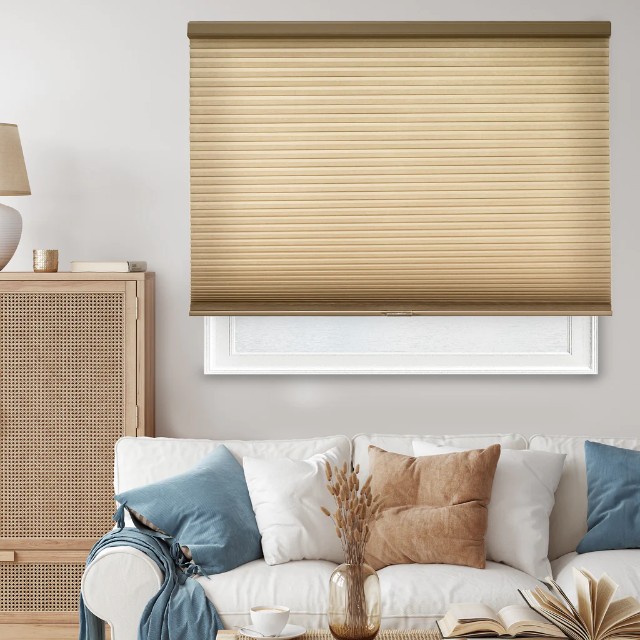
Different Types of Cellular Shades
Discover the perfect combination of style and practicality with various types of window decor available. Cellular window treatment shades offer a range of options for mixing styles, colors, and textures to suit any decorating scheme.
They are also popular choices for their energy efficiency, filtering out heat in summer and trapping it in during winter months. Installation tips are available online or from home improvement stores, making cellular shades easy to install even for beginner do-it-yourselfers.
Cellular shades come in a variety of lift systems, including cordless models that offer safety advantages when there are small children in the home.
Other features include top-down/ bottom-up designs that give users greater control over privacy and light levels, as well as blackout materials that completely block out incoming sunlight or unwanted glare on TV or computer screens.
With these options, you can customize your cellular shades to fit your individual preferences while still achieving maximum energy efficiency.
The wide selection of fabrics makes it possible to create a custom look without spending a fortune on designer window treatments.
From sheer fabrications that diffuse the light without sacrificing views to durable materials designed for high-traffic areas like hallways and living rooms, cellular shades provide an array of design possibilities when it comes to mixing styles and colors within one space.
Transitioning seamlessly into the next section about customizing cellular shades lets you take full advantage of all these features with ease.

Customizing Cellular Shades
Transform your space with the perfect combination of style and practicality by customizing cellular shades to fit your individual preferences.
With easy-to-follow installation instructions, you can make sure that your customized cellular shades properly cover any window in your home. Additionally, light filtering capabilities are adjustable depending on the cellular construction of the shade. You can choose from:
- Single honeycomb cells for maximum insulation
- Double honeycomb cells for superior energy efficiency
- Triple honeycomb cells for extreme noise reduction
By playing around with different options, you can find the perfect cell size and material to meet both the aesthetic and functional needs of each room setting.
With so many possibilities, it’s easy to create a unique look that fits perfectly into any style or décor without sacrificing quality or performance. Plus, you can rest assured knowing that there are no gaps between the fabric and headrail when closed – giving you peace of mind about privacy and security in your home
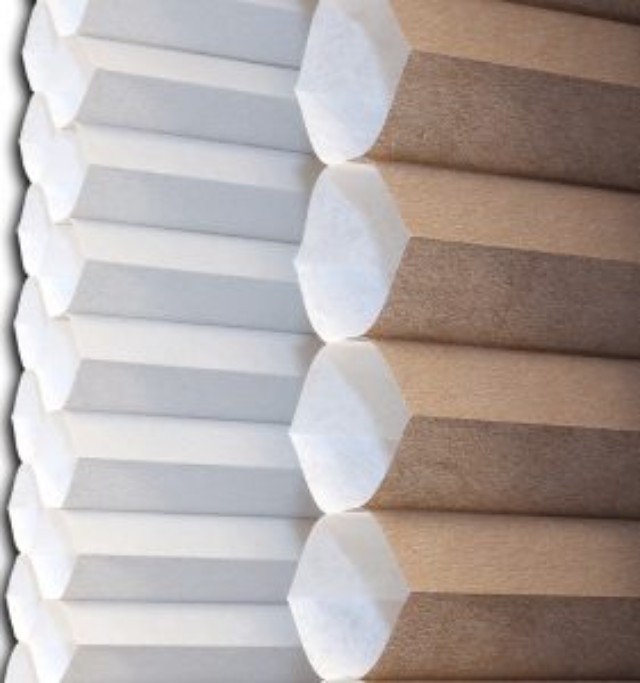
What are the pros and cons of cellular shades?
Cellular shades, also known as honeycomb shades, have advantages and disadvantages that should be considered when selecting window treatments. On the plus side, these shades are energy efficient due to their air-trapping design which helps keep homes cooler in summer and warmer in winter.
They are also available in a variety of colors and opacities so they can be used to achieve privacy without compromising on natural light. On the downside, cellular shades tend to cost more than other window treatments options and require extra care for cleaning and maintenance.
Pros
Cellular shades are great because they offer so many advantages — they’re energy efficient, attractive, and give you the ability to control light levels in your home. In terms of energy efficiency, these shades create a layer of insulation that helps regulate the temperature in your home throughout the year.
This means you can save money on heating and cooling costs by using cellular shades. Additionally, their unique design gives you the ability to control how much light comes into each room in your house. Finally, these window treatments are attractive and come in a variety of colors and styles to match any decorating style.
Overall, cellular shades provide a number of benefits that make them an excellent choice for homeowners looking for improved energy efficiency and light control. However, there are also some drawbacks that should be taken into consideration before making a decision.
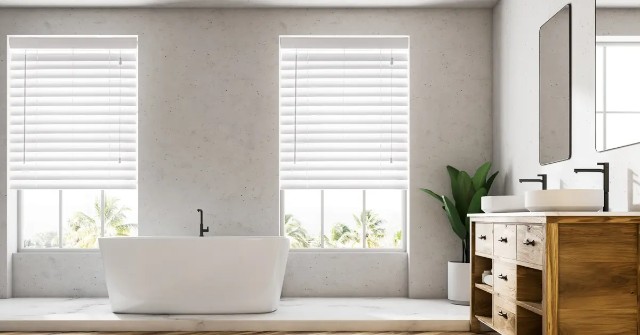
Cons
You might want to consider the potential drawbacks of cellular shades before deciding if they’re right for your home. Although these shades are known for their energy efficiency, they can have a negative effect on insulation.
Additionally, some people find that these shades don’t provide enough light control compared to other options like pleated shades. Furthermore, their energy efficiency can be compromised if installed improperly.
The cost of cellular shades may also be a factor in your decision-making process: they are often more expensive than other types of blinds and curtains. Even though they offer many benefits—including increased privacy and noise reduction—their higher price tag may dissuade you from investing in them.
Ultimately, it boils down to what’s most important in terms of energy efficiency, light control, and insulation when deciding between cellular or pleated shades.

What is the difference between cellular and pleated shades?
It’s hard to pick between cellular and pleated shades, but the difference can make a huge impact on the look and feel of your home. Cellular shades are constructed from multiple fabric layers that form honeycomb-shaped cells when opened, while pleated shades have horizontal folds composed of one or two pieces of fabric.
Comparing these two styles side by side, cellular shades provide better energy efficiency due to their air pockets that trap heat during summer and cold air during winter. They also offer more light control because the cellular shape allows for adjustable levels of light filtering in different rooms.
However, the installation process for pleated shades is simpler compared to cellular since it comes as one piece with no need to attach separate components together.
| Features | Cellular Shades | Pleated Shades |
|---|---|---|
| Energy Efficiency | High | Low |
| Light Control | High | Low |
| Installation Process | Complex | Simple |
When it comes to visibility at night, both types offer complete privacy from outside view when closed. While you can’t see through them at night, they do allow some minimal amount of natural light when slightly opened depending on how much space has been left between slats.
Additionally, both types come in various materials like wood or polyester which give homeowners plenty of design options for creating the perfect look for their interiors. No matter which type you choose for your home décor needs, each style offers its own unique benefits that will help create a more comfortable atmosphere indoors.
Can you see through cellular shades at night?
At night, you can’t see through these shades no matter how much light they let in when slightly opened. Cellular shades are made of fabric material that is arranged into honeycomb-shaped cells to provide efficient insulation, sound absorption, and light diffusion.
The unique design of the cellular shade not only provides energy efficiency but also ensures better privacy since it blocks visibility from both sides. This feature of cellular shades makes them a popular choice for bedrooms and other areas where privacy is important during the night.
The fabric material used in cellular shades also helps reduce noise pollution in your home since its construction creates an effective barrier between outdoor sounds and the inside environment. In addition, its light diffusion properties allow natural sunlight to enter while still keeping the unwanted glare out during the daytime.
This makes it a great option for those who want to maintain their view with minimal visibility disruption at night time.
Cellular shades offer a great combination of benefits for anyone looking for added insulation, sound absorption, and improved lighting conditions within their home without compromising on privacy or visibility at night time.
Plus, with the many color options available, you can easily find a style that fits your needs as well as your décor perfectly.

Frequently Asked Questions
Conclusion
Cellular shades offer a unique combination of style and function, making them an ideal choice for any home. With their energy-saving capabilities and customizable options, these shades can help you create the perfect look while also providing privacy and protection from harsh weather.
They come in a variety of styles, so there’s sure to be something that fits your needs. Plus, they’re relatively easy to install and maintain. All in all, cellular shades are an excellent choice for anyone looking to add beauty and value to their home.
And if you’re interested in comparing cellular shades vs other coverings, check out our articles on comparing cellular shades and curtains and comparing cellular and faux wood now!


